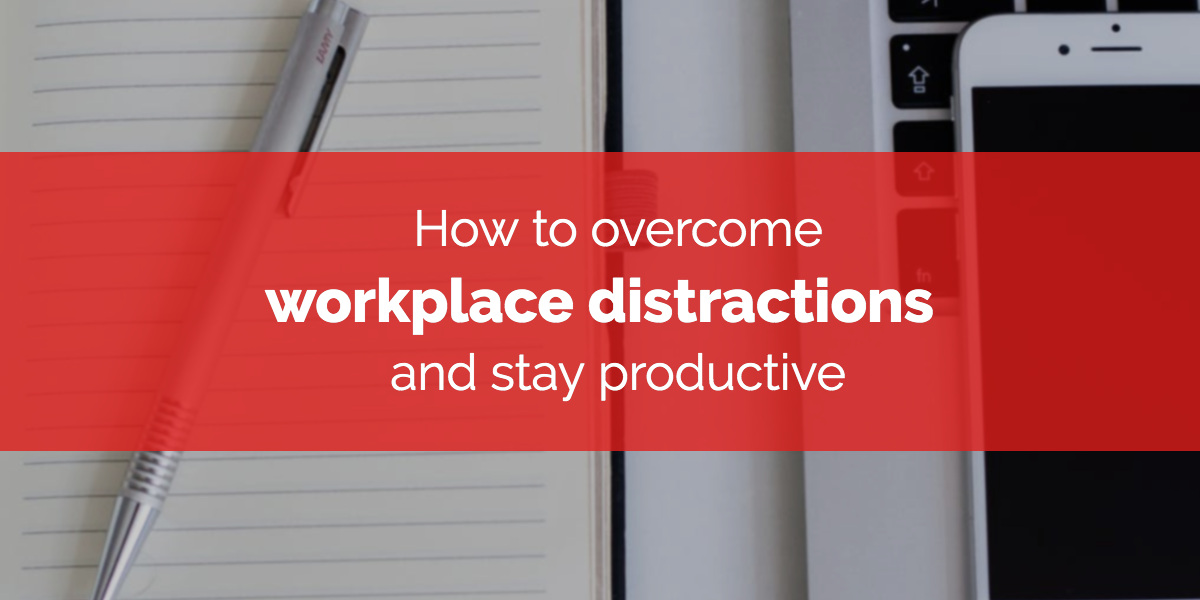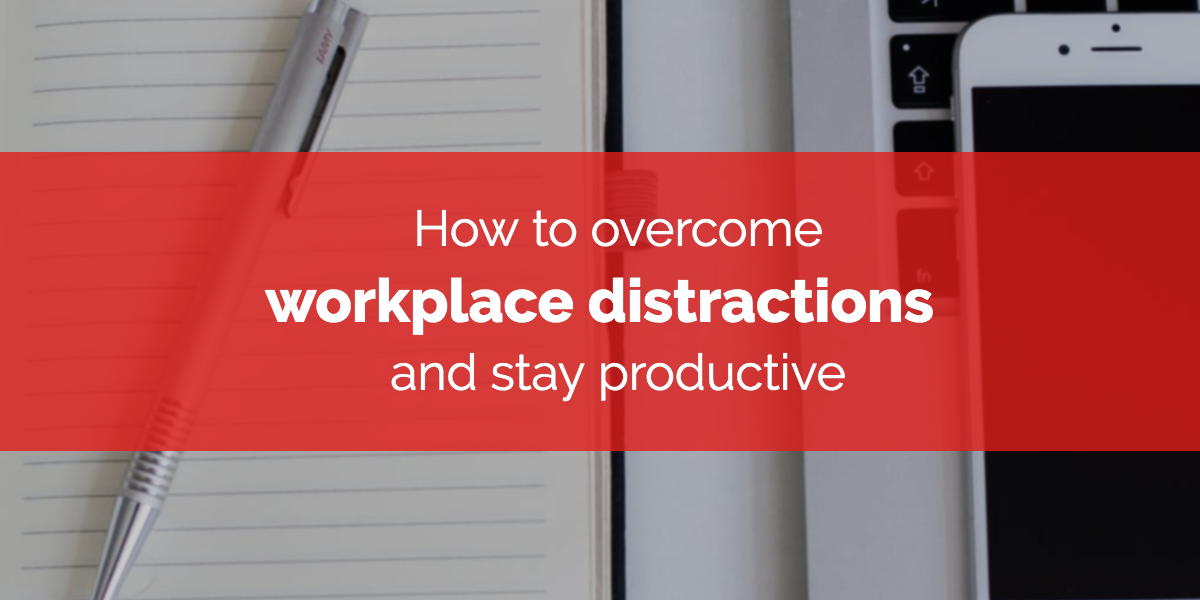
Distraction is an epidemic in nearly every modern workplace. Between the rising popularity of open floor plans for offices, the constant rollout of new smartphone apps, and the increasingly collaborative nature of many jobs, it can be challenging most days for employees to find even a few minutes to work independently in a distraction-free environment.
According to a 2018 study by Udemy:
- 36% of millennial/Gen Z respondents say they spend two or more hours per work day looking at their phones for personal activities
- 54% of respondents said that workplace distractions are keeping them from meeting their potential
- 34% of respondents said regular interruptions make them like their jobs less
Whether distraction is a problem for you personally, for the employees in your office or both, the good news is that strategic planning can help minimize these distractions, increase engagement, and boost productivity. Here are a few things to try:
Set your intentions
When there are dozens of important things to get done, it’s easy to fall victim to analysis paralysis. Before you know it, you’ve spent all day trying to decide what to do next, or avoided the stress entirely by succumbing to any minor distraction that comes your way.
It can be helpful to acknowledge that you won’t always be able to get every single thing done on any given day. Instead, just pick 2-3 objectives to focus on accomplishing each day. You may find that adjusting your expectations and setting a few manageable priorities can help you build momentum that will power you to go above and beyond what you originally planned to accomplish.
Schedule your day
Once you’ve set your priorities for the day, take a look at your schedule. Note any meetings you need to attend, and make a mental note of when you’re most prone to distraction. For most people, distraction peaks in the early afternoon, so aim to get your most important work done before then or in the last few hours of your workday.
With a big picture of what your day involves, make a plan for how you’ll address your high-priority items during your most productive hours. If your calendar is visible to coworkers, block out chunks of time for focus so they’ll know not to try to schedule any last-minute meetings.
Smaller work items or tasks that don’t require as much focus can get done in the short windows between these prioritized chunks of time, or in the parts of your day when deep focus is hardest for you to achieve. By planning ahead, you can work with your brain’s natural periods of focus so that you’re not in crunchtime when your willpower is weakest.
Set the stage
According to Udemy’s study, about half of workplace distraction is “self-inflicted,” so proactive planning is key. To get into your least-distracted state, it’s important to get your environment working for you. Nothing interrupts a state of flow quite like a push notification or the ding of a text message. If possible, put your phone in a bag or a desk drawer so it’s not a temptation, or simply turn off notifications during your periods of deep focus. Social media comments from friends and important news stories will be there for you when you’re ready for a break.
Be sure to drown out auditory distractions as well. Noise-cancelling headphones can be a great option to dampen city noises outside or the water-cooler conversations happening thirty feet away. Alternately, some people prefer to listen to classical or ambient music, or to use a service like Noisli that curates productivity-enhancing soundscapes.
Work in short sprints
Even with all the careful planning in the world, distractions will continue to pop up. One way to train your brain to stay focused is to practice acknowledging that distractions are present and then setting aside time to engage with them.
Try a time-management technique that incorporates regular breaks, such as the pomodoro method, which involves 25-minute intervals of work separated by 5-minute periods of rest. With some experimentation, you may find your brain prefers a longer or shorter amount of focused work time. Whatever that length of time is, reward yourself for your hard work after each interval with a few minutes playing a game or texting a friend. When you’re not spending all your energy on trying to permanently drown out distractions, you’ll increase your ability to focus on what’s in front of you.
Start bigger conversations about office culture
While individual employees can use these techniques to make the most of their work time, there are some distractions that are beyond any one person’s control. Noisy offices and frequent meetings are cultural factors that affect employees’ abilities to get into a state of flow. Allowing employees to work remotely when they need to focus, providing quiet spaces in the office, or establishing regular “no-meetings days” can be helpful ways for company leaders to do their part to reduce some of the noise that keeps employees from engaging meaningfully in their work.
Want more tips to help your workforce become more engaged and productive? Check out our new ebook, Exceeding Employee Expectations.
